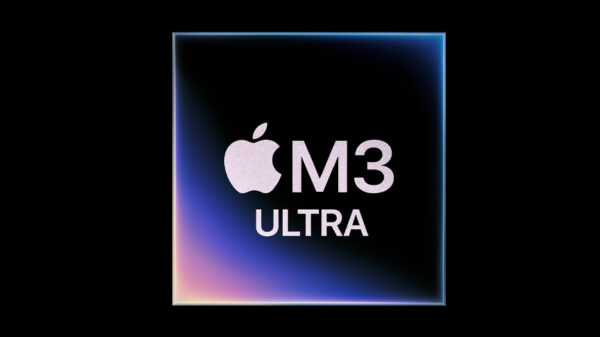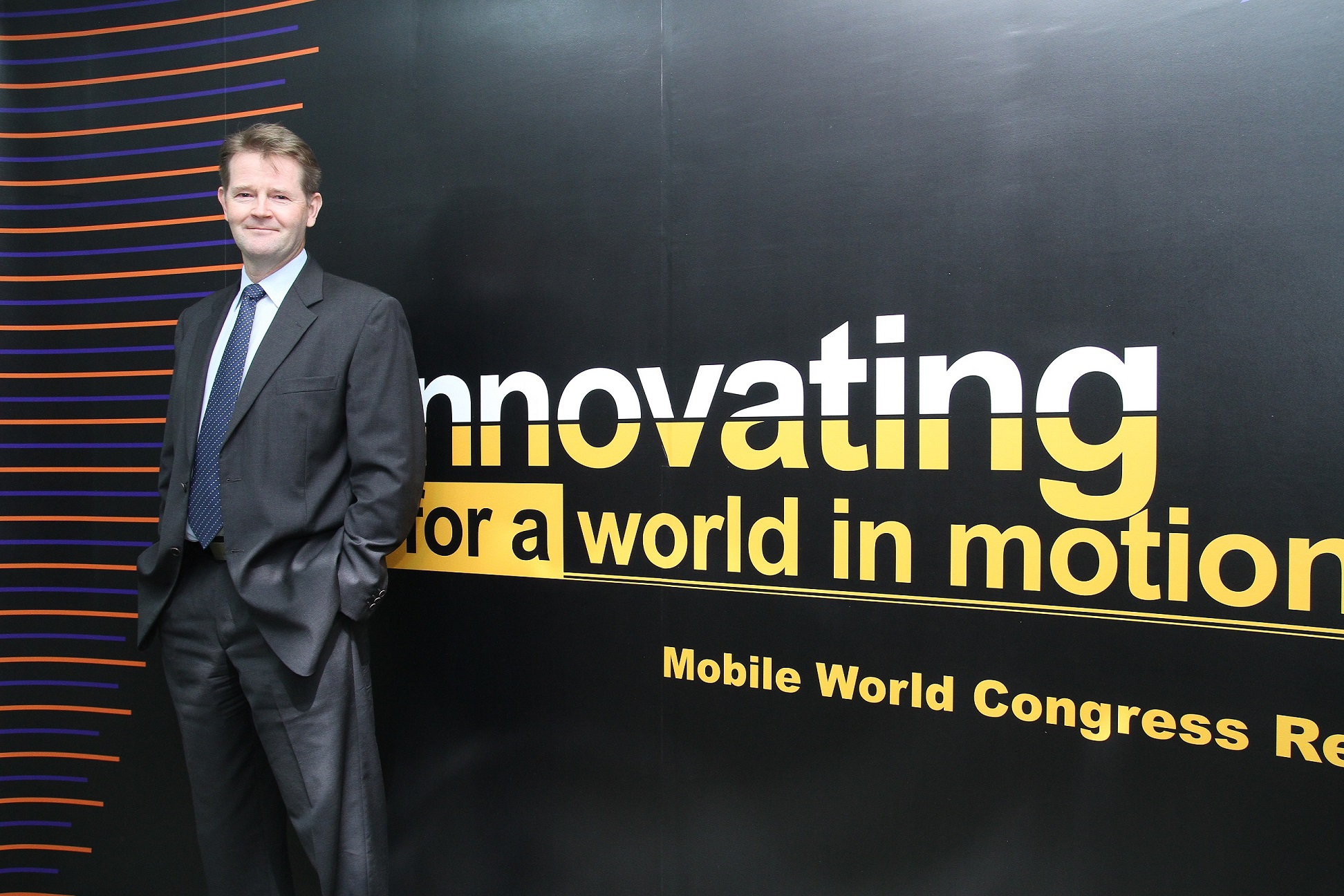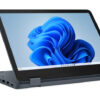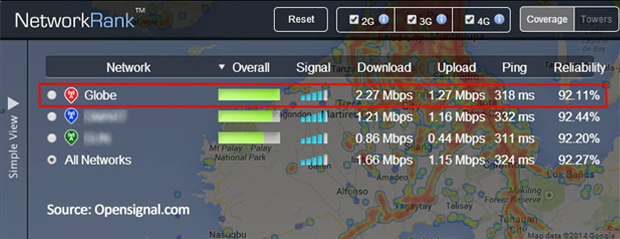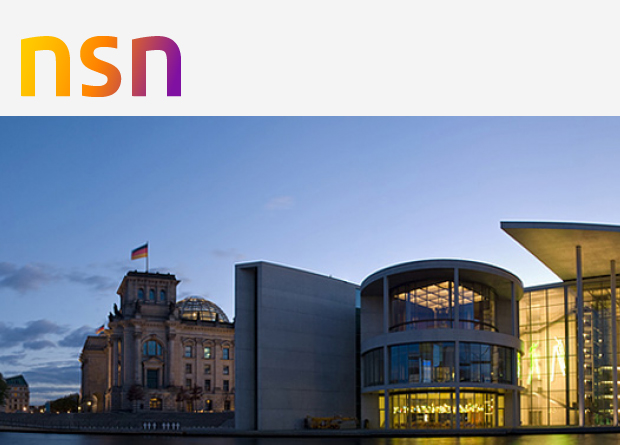
Markku Nieminen, Country Manager for the Philippines of Nokia Solutions and Networks (NSN), discussed changes in the NSN brand and highlighted some of its newest technology during the MWC-Revisited event.
Long term evolution (LTE) technology has a bright future in the Philippines as mobile users demand bigger capacity and faster connection and response time, according to Finnish mobile broadband specialist Nokia Solutions and Networks (formerly Nokia Siemens Networks).
Markku Nieminen, NSN Philippines Country Manager, correlates the future of LTE architecture in the Philippines to the heavily growing local mobile utilization which is driven by the growing population who are using smartphones or mobile devices. In the future, this growth in the mobile usage would require faster connection and response time, and more capacity, and this is where the need for LTE arises.
Leslie Shannon, NSN’s Senior Strategic Marketing Manager, confirmed this when she reported that the Philippines ranks 17th in global smartphone ownership. There are 19 million smartphones in the Philippines today, more smartphones than in Canada, Thailand and the Netherlands.
Technology Vision 2020
NSN has announced that it is putting its Technology Vision 2020 into practice to implement a hands-on approach which enables mobile broadband networks to profitably deliver one gigabyte of personalized data per use per day within the next seven years.
By delivering its vision’s six pillars, NSN is helping mobile operators meet the following challenges they have to deal with, namely: extreme traffic growth, simplifying network operations and providing the ultimate personal gigabyte experience.
“With its Technology Vision 2020, NSN aims operators to remain profitable and achieve a stronger competitive positioning,” said Niemenen.
In cooperation with mobile operators globally, the six objectives NSN has identified are as follows: enable 1,000 times more capacity; reduce latency to milliseconds; teach networks to be self-aware; personalize network experience; reinvest telco for the cloud; and flatten total energy consumption.
To increase capacity, NSN is driving 5G research and heading the HetNet (heterogeneous networks) stream in METIS, an EU-funded 5G flagship research project.
By introducing Liquid Applications which transforms the base station into an intelligent part of the mobile operator’s network to store, process and deliver local content in close proximity to the enduser, NSN has already taken significant steps in reducing latency to milliseconds.
The engagement with entrepreneurs, developers and application providers to create a new category of applications using capabilities of the Liquid Applications platform is an example of how NSN is encouraging an open environment for innovation.
NSN has developed the first working implementation of a linearly scalable big data platform for the telco environment aimed at teaching networks to be self-aware and personalize network experience.
Developed by NSN, together with eight ecosystems partners at its innovation center in Silicon Valley, the platform was completed in five months and is capable of analyzing one million live messages per second. This project is an example of how NSN is applying the best of IT and telco technologies to speed up innovation.
Reinventing telco for the cloud
To reinvent telco for the cloud, NSN has started “cloudification” of software elements from its Customer Experience Management and OSS offering, moving towards radio IMS, mobile core and ultimately towards radio access elements. The migration of network elements in combination with software defined networking (SDN) will transform today’s networks into a fully software defined infrastructure that is both highly efficient and flexible.
Despite heavy traffic growth, flattening energy consumption is a growing concern for operators. In mature markets, energy consumption accounts for 10%-15% of the total network OPEX already and can reach even 50% in developing markets. The focal point for improving energy efficiency is the radio access, which accounts for around 80% of all mobile network energy consumption.
The energy efficiency that can be achieved by 2020 depends heavily on the pace of network modernization. To improve energy efficiency massively, NSN drives advanced power amplifier innovations, deployment studies for customer networks, industry initiatives and standardization.
Insight about customer experiences
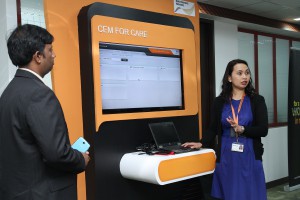
NSN employees show off CEM on Demand, a NSN offering that provides network operators the deepest possible understanding of their customers’ experiences, and helps to bridge the gap between customer satisfaction and network performance.
Aside from Liquid Applications, NSN demonstrated the potential of the so-called Customer Experience Management (CEM) on Demand, which gives operators an insight about customer experiences and bridging the gap between customer satisfaction and network performance. It also allows operators to prioritize actions in resolving issues before they damage revenue. This tool was launched last year to be used for marketing and operations. For this year, it has additional functionality wherein the CEM tool is brought in front of the customer care agent in an operator environment.
The Smart Scheduler, which has a direct impact on throughput or how fast one can download or how fast one can upload a specific data from a smartphone or a mobile device, and how fast a message can come across, was also demonstrated.
Why LTE matters
Leslie Shannon, NSN’s Senior Strategic Marketing Manager, on the other hand, discussed about the benefits of moving to LTE (long term evolution) architecture.
According to her, LTE matters a lot because of the following: LTE architecture allows the latency to be short; LTE is faster than DSL and has a very fast round-trip response time; and it provides a customer experience even better than many DSL connections.
Shannon also mentioned how LTE is used by the enterprise. “It is used in situation where there’s a need for large files or when adding mobility to their active files.” She cited construction industry and engineering firms as examples of LTE users.
Meanwhile, NSN had completed on August 7, 2013 the acquisition of Siemen’s 50% stake in Nokia Siemens Networks which was announced on July 1, 2013. As a result, the company name was changed to Nokia Solutions and Networks or NSN.
NSN is wholly owned by Nokia and will continue to be consolidated by Nokia. As announced by Nokia, Rajeev Suri will still be the CEO and the NSN Executive Board will remain unchanged as a result of the transaction.
“While our name and brand have changed, I would like to emphasize that our overall strategy and our focus on mobile broadband remain the same,” said Rajeev Suri, CEO of NSN.

